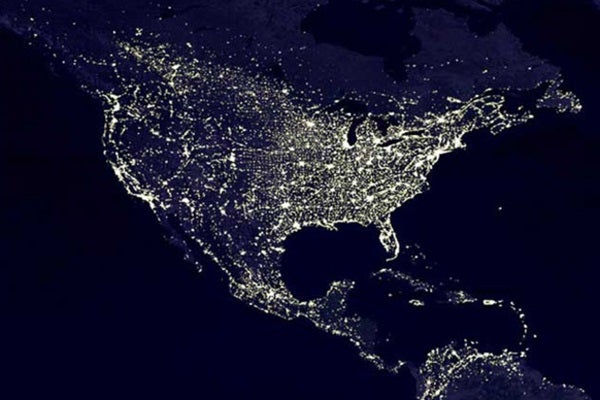Nothing beats a beautifully clear, starry night. But in many places around the world, light pollution is hiding the twinkling stars from our view. Light pollution comes from artificial outdoor lights like street lamps, stadium lights, and porch lights. Nearly three-quarters of city dwellers have never seen a pristine dark sky and many don’t know what they’re missing. But light pollution doesn’t only affect humans — it can also do widespread ecological damage. Too much light can disrupt nocturnal animals, confuse migratory animals, and have harmful physio-logical effects on the rhythm of life.
The Globe at Night project seeks to raise awareness about increasing light pollution and quantify it by having citizen scientists measure the darkness of the sky near them. All you need is a smartphone to start making observations. You will look up at the night sky and mark its darkness based on how many stars are visible. You can also use a Sky Quality Meter (find more information on the project website) to record additional data.
Take Part: Join the Globe at Night Project by visiting Scistarter.org
Location: Global
Website: https://scistarter.org/globe-at-night
Goal: To raise awareness about light pollution around the world.
Task: Use the project website to find the date and constellation that the Globe at Night scientists are asking you to observe, as well as the latitude and longitude of your location. Go outside more than an hour after sunset (8 p.m. to 10 p.m.) but before the Moon is up. Let your eyes become used to the dark for 10 minutes before your first observation. Match your observation to one of seven magnitude charts available online and note the amount of cloud cover. Report the date, time, location (latitude/longitude), the chart you chose, and the amount of cloud cover at the time of observation. Make more observations from other locations, if possible.
Outcomes: In 2017, participants made more than 15,000 observations from 106 countries and all 50 states. Most of these observations showed some light pollution and less than 300 of the observations had fully starry skies. You can use the project’s online interactive map to discover light pollution in your neighborhood and compare your observations to thousands of others around the world.
Why we like this: Globe at Night has well-defined and straightforward protocols that are equally great for participating in at home or as a group enrichment activity during an evening event.
From The Field Guide to Citizen Science: How You Can Contribute to Scientific Research and Make a Difference by Darlene Cavalier, Catherine Hoffman and Caren Cooper. Copyright © 2020. Reprinted by permission of Timber Press.










